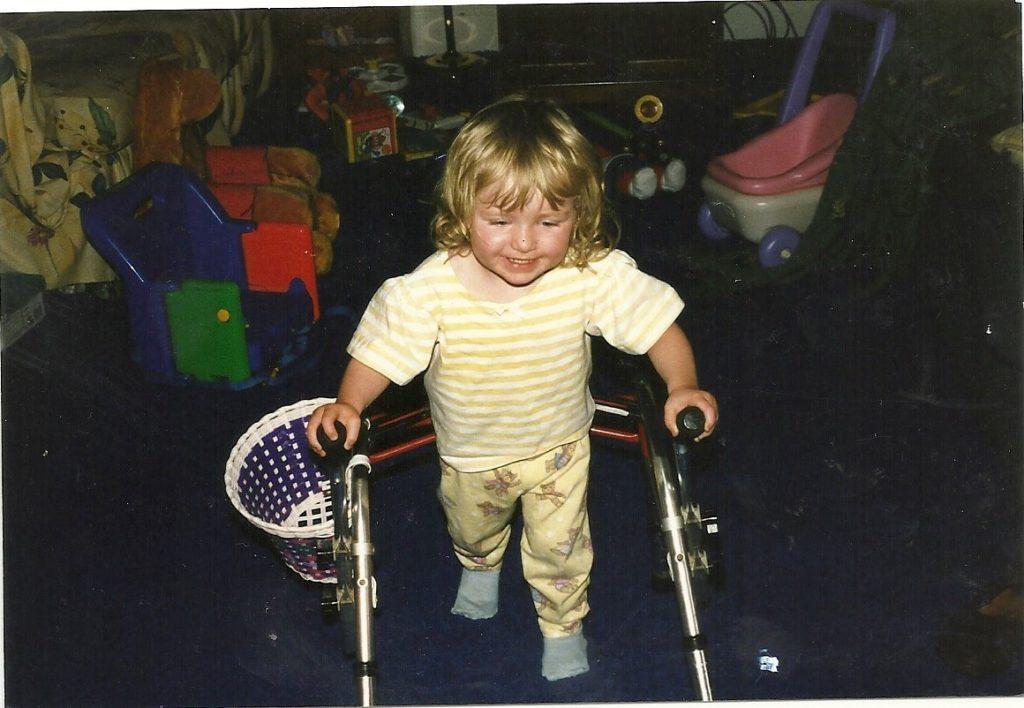When people think of kids out in the world, that picture is nothing out of the ordinary. Small feet trample and trip through grass, dirt and gravel, the world of play. But allow me to add one small detail to this image: Small tire tracks. It’s a common misconception that those of us who live with physical disabilities have little athletic interest, let alone ability. As only one member of this diverse community, I’m here to show you otherwise.
Growing up, the world was faster than my body could handle. Friends of mine were off exploring the world on two feet while I was still trying to sit up. They were running, I was still at a crawl. But I saw them. Life with Cerebral Palsy (CP) is a lot of playing catch up. In basic terms, the condition is caused by early damage to the brain, causing a mix up of electrical signals to the muscles. So in my case, my brain tells my legs to tighten major muscles in my lower body, making it harder to move. All of that energy builds up and translates into frustration. I was four years old with a temper that gave my parents a run for their money, and sick of watching everyone out-run me. That year brought my first walker, my first steps, the simplest freedom I ever felt, carpet under my toes.
While many try to understand the impact of this delayed milestone, it’s hard to explain the kind of passion that comes from that first moment. It’s the spark that lights a powerful flame. I ran and tripped, jumped and climbed until my growth spurts made it impossible. Then after double leg reconstruction and more first steps, I’m doing it all again. In that time, I was able to reach out and find the wonderful world that is adaptive sports. Kids of all ages and different disabilities were collected for a full week of sports in a camp specifically fit for wheelchairs. It was intense, it was passionate, it was cathartic. There was this air of something that can’t be captured anywhere else in daily life, total understanding. This was the only place in my life that lacked any physical judgment. I wasn’t being watched, poked, prodded or examined. In that gym, my body was nowhere out of the ordinary.
Day to day, many physically disabled people, myself included, go around trying to fit into the world that doesn’t fit us. These teams become a haven for so many that still deal with that pent-up energy. Walkers, wheelchairs, anything used in mobility assistance, can be traps. Yes, they bring ease for day-to-day movement. But I cannot tell you how many days I have had where I wish I could stand up and sprint with nothing but the trust in my own body. Yet, to many that see people in wheelchairs, crutches, walkers, you name it, our bodies appear fragile. But look beyond whatever equipment has caught your attention and you’ll see an athlete. Someone that goes through a workout every single day just getting around and will still want to go the gym when they get time. Sure, some of us sit down for a lot of the day, but does that mean we’ll break if we exercise? Do you think we have our own Olympic branch by being too fragile to be active? No. There are people out there boxing in wheelchairs, fencing, playing rugby and skydiving. An athlete doesn’t always walk on both feet, sometimes they don’t even walk.
These aren’t teams of people with the same disadvantage. These are people with the same passion. That fire, that hunger to move and make their body work for them instead of allowing the disability to set any limits. I went to school as one of the few disabled students placed in an average classroom. Videos of Paralympic athletes were on a loop as I tried to remind myself that I was physically capable of more than just a few laps down the hall. The minute that more able-bodied people can wipe the pity from their perspective watching the Paralympics or seeing disabled people in gyms, the sooner we can close this gap between able and disabled activity a little more.



























